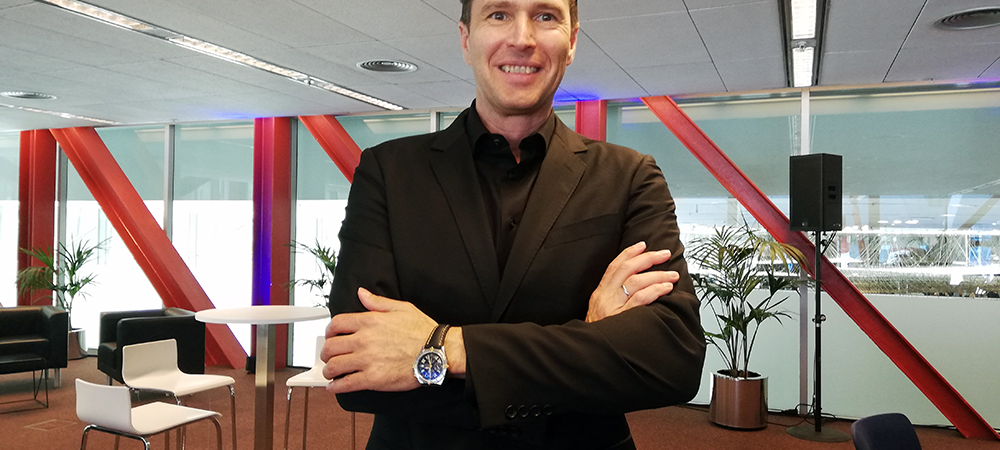With digitisation at the top of every CIO’s agenda there is still a lot of potential to be realised. Intelligent CIO asked Marcell Vollmer, Chief Digital Officer, SAP Ariba and SAP Fieldglass, how CIOs can be more successful on their Digital Transformation journey.
SAP Ariba and SAP Fieldglass help companies connect to get business done and spend better.
With SAP Ariba and SAP Fieldglass, businesses can manage the buying process across all categories of spend – from direct and indirect goods and services to external workforce.
With SAP Ariba and SAP Fieldglass, companies are transforming how they manage all categories of spend with improved operational efficiency and compliance, increased agility and accelerated business outcomes.
We spoke to Marcell Vollmer, Chief Digital Officer, SAP Ariba and SAP Fieldglass, to ask for advice about how CIOs can best tackle the challenges of Digital Transformation and maximise its potential.
How can SAP Ariba help CIOs with their Digital Transformation?
I think the number one factor is what we now call Intelligent Spend Management. The individual companies that make up the SAP Group are now part of an integrated approach to manage all your spend. But what does it do for the CIO?
Basically, they can see their landscape get simplified and streamlined by having a fully integrated source-to-pay-suite integrated in S/4 HANA or in a related ERP (Enterprise Resource Planning) backend system. That’s really what I see as a big benefit. This was a key message on the intelligent enterprise: How we connect the applications to run everything related to the spend of a company.
In terms of company products that CIOs would be interested in implementing can you name the major ones?
I think the number one product is really implementing the Ariba network, connecting with all the suppliers outside and really having a platform, basically replacing the formerly known EDI solutions by a network-based solution. So not a one-to-one, it is a one-to-many connection, I think that’s the number one benefit that I can see from a CIO’s perspective.
On the other side, the integrated suite for Ariba that we offer, running all your strategic procurement activities, starting with the spent visibility getting PO (purchase order) or non-PO data going to supplier lifecycle and performance management, having all the data basically in one solution, working with that, going on then for eSourcing or eOptioning and using data to transfer it into your contact management – that really is the benefit of the strategic side.
This is the SAP Ariba Strategic Suite, the strategic sourcing suite that we have, this is accompanied with guided buying. The next version, is not only a catalogue version, it is also an interactive platform to connect with the lines of businesses to basically replace pre-tax orders and have a more standardised way of how you work with your businesses.
Then on the downstream side you have then the purchase order financial automation and invoice management. Ideally, you do it by the network, basically send it out and the supplier can do a purchase order flip and send specs information, no paper, no documents, nothing needed anymore. Within the EU, it is now possible to really drive support consistently.
How does the company manage complexity for its customers?
What you see is that a lot of companies have a zoo of solutions implemented and from a CIO perspective, it’s a nightmare.
The difficulty is having nearly all the applications integrated that you need to manage when you do an update of one system, your ERP or whatever related system it is, and then you need to see that you can really catch up with all the related systems to that.
Maintaining the IT landscape is exactly where I believe a big benefit comes from the integrated approach and we want to work hard on getting the integration done on the S/4 HANA side, so we really have a very standardised approach connecting your ERP with all the different applications.
How can CIOs make the most of their data?
I think this is a $1 billion question. We all know that because if you really could use all the data, and make a business model out of that, you would probably no longer be a CIO or you would start your own company.
I think it’s fair that companies start looking at this in a very systematic way, also supported with Machine Learning and ideally also Artificial Intelligence. But you need to be realistic also on the available use cases, because everyone talks about machine intelligence on the other side but what can you really get out of it?
And very often, you are still stuck with one problem, you can’t solve easily. And this is basically the data quality. If your data is poor, it does not help you even if you have great ideas and want to put tools on top of that.
It is not leading you to insights and therefore I believe on one side you need to ensure that you use your operational data, that you use some machine intelligence available, to basically cluster the data and derive action insights.
This is exactly also where you need to combine the ‘experience data’, because operational data is telling you revenue is declining.
So, for instance, if you were an umbrella salesman you need to ask ‘OK what’s the reason we are not selling as many umbrellas?’ It might be it’s a hot day, or a day with no rain, so you’re not selling any umbrellas.
If the entire summer is very, very nice umbrella revenue will be going down. But this is only a fact, not an insight.
Another thought could also be: ‘Hey, probably I don’t have the right umbrellas that people like anymore.’ The colours might not be trendy enough. And even if they are getting sold this is where you need to get as much data as possible in getting feedback about why customers like the product.


